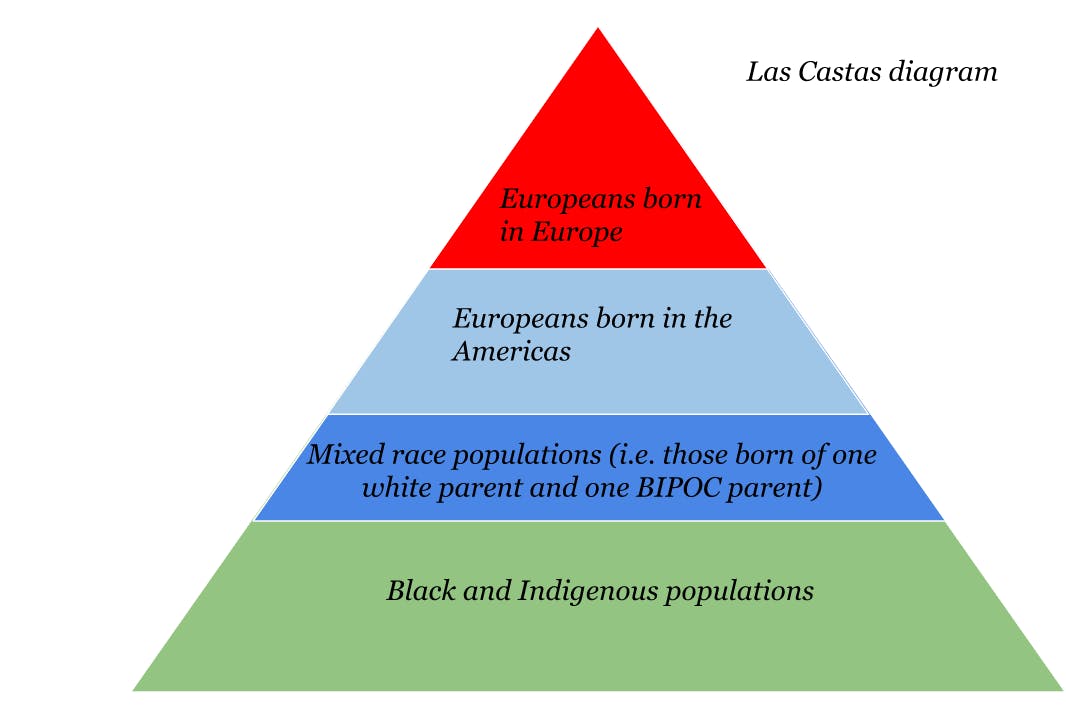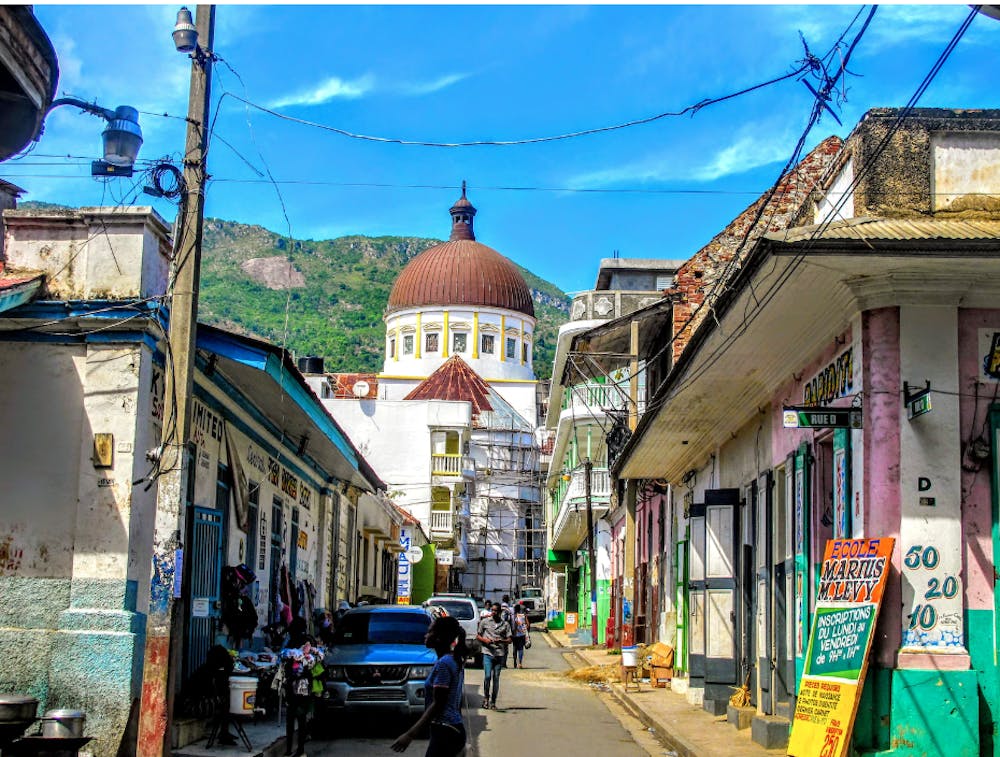My mother doesn’t consider herself Latina. Several shades lighter than myself with loose black curls, my mother is the pinnacle of mixed-race Haitian identity. She is the legacy of Code Noir, a racial caste system that worked to subjugate those who were not landowning whites, and the fact that she does not consider herself Latina is proof that four hundred years later, the system still works.
Latin America is the product of the triangular slave trade that dominated the region for centuries. It is an amalgamation of Black, indigenous, and European identities, largely because of the racial caste system created by the European colonizers. Under the Spanish and Portuguese, the racial hierarchy “Las Castas” was created. The purpose of Las Castas was to create a race-based caste system in an increasingly diverse Latin America, as identities such as mestizo (mixed indigenous and European race) arose.
We live in a racialized society, and while the United States has the privilege of viewing race as merely black and white, Latin America lacks that privilege. In the United States, Black Americans were forced to live amongst their colonizers, while in Latin America the colonizers were forcibly evicted from the island (i.e. the Haitian Revolution). Thus, two systems of racial hierarchies were created, each with the goal of oppression and subjugation,
Continuing, under Code Noir in Haiti, society saw the rise of a mixed race class—the children of both slaveowner and slave. While those of mixed race were ostracized at the time for their ties to slave owners, the demographic is still a key share of Haiti’s population to this day.

As a result of both Code Noir in Haiti and Las Castas in the bulk of Latin America, Latin America has created a mixed identity and mixed race society. However, beyond the creation of a new generation of people, the integration of Code Noir and Las Castas has left Latine society in a state of confusion—who is Latine? And even beyond that point, what race can Latine people identify as?
Latine is defined as the gender-neutral term referring to those of Latin American descent, a rejection of the traditional gendering of Latin languages. In order to be considered Latine, a person must be a descendant of a country in the Americas that speaks a Romance language, such as Portuguese, Spanish, and French.
Haiti historically has not been considered Latine. Although Haitians reside in a Romance language-speaking country in the Americas, thus cementing themselves as Latine, Haiti has long been isolated from this identity. This largely stems from the racial demographics of Haiti, a majority Black nation. Under both Code Noir and Las Castas, those with Black ancestry were placed at the bottom of the social pyramid. In the modern day, this has translated to Black Latine people being rejected from their own culture and society.
As a Black Haitian, I was not aware of my Afro-Latina identity until last year. In passing, I had heard that perhaps Haitians could be considered Latine, and it led to me beginning my own research as to why the entirety of my life had been spent unaware of my Latina identity and the history behind it.
However, it’s not just the Black Latines who are struggling with both race and identity. As mentioned previously, the race of Latin Americans has become increasingly complicated. For example, those who are considered to be White in the United States might not be considered White in Latin America. Latin American ancestry is largely mixed, making it impossible to instill the American concepts of merely “White” and “Black” on Latine people, same with the concept of who is and isn’t Latine.
Furthermore, Latines struggle with accepting their lack of whiteness in some instances.
In Latin America, there is a concept of “mejorar la raza,” or “improve the race.” The meaning of this phrase stems from colonial-era concepts of marrying people of fairer complexions in order to have lighter-skinned children. We are four hundred years post-Las Castas and four hundred years post-Code Noir, yet Latine society is still influenced by these colonial hierarchies.
I identify as Afro-Latina. In many ways, I fulfill stereotypical Latina traits—I argue whether it's pronounced plan-tain or plan-tin, and I blast Bad Bunny in the shower—yet when it comes to my race and identity, I feel like an oddity. I don’t speak Spanish, I have never been to my motherland, and I just don’t look like a stereotypical Latina. The intuitions of Las Castas and Code Noir have left a permanent impact on Latine society. Although I have only recently come into my identity, I hope to be able to educate the rest of my family that we are Latine.
Part of what helped me come to terms with my own identity was education through social media, such as @lunionsuite @cafecitoconestrellita and @belatinanews on Instagram, which connected me with both parts of my Afro-Latina heritage.
Education in our modern era is complex: as our identities become more complicated and intertwined, as do our resources for education. I believe that history is a cornerstone for education, and through looking at the history of Latin America, those struggling with their own Latine heritage may ultimately find both pride and comfort in our prosperous history.



